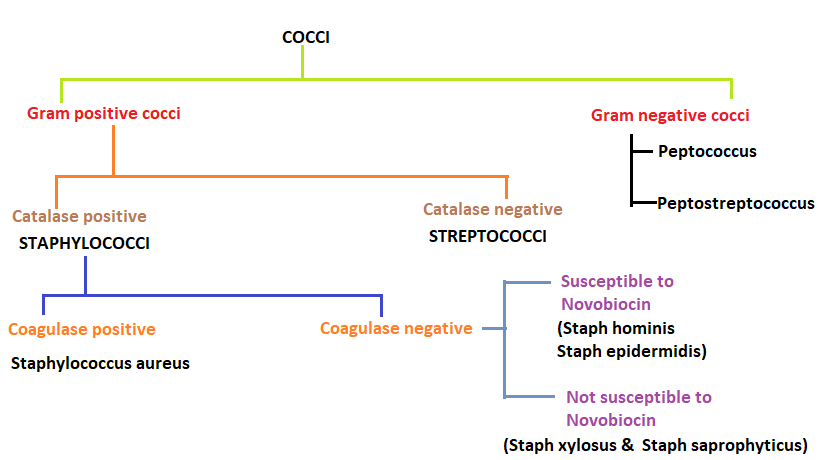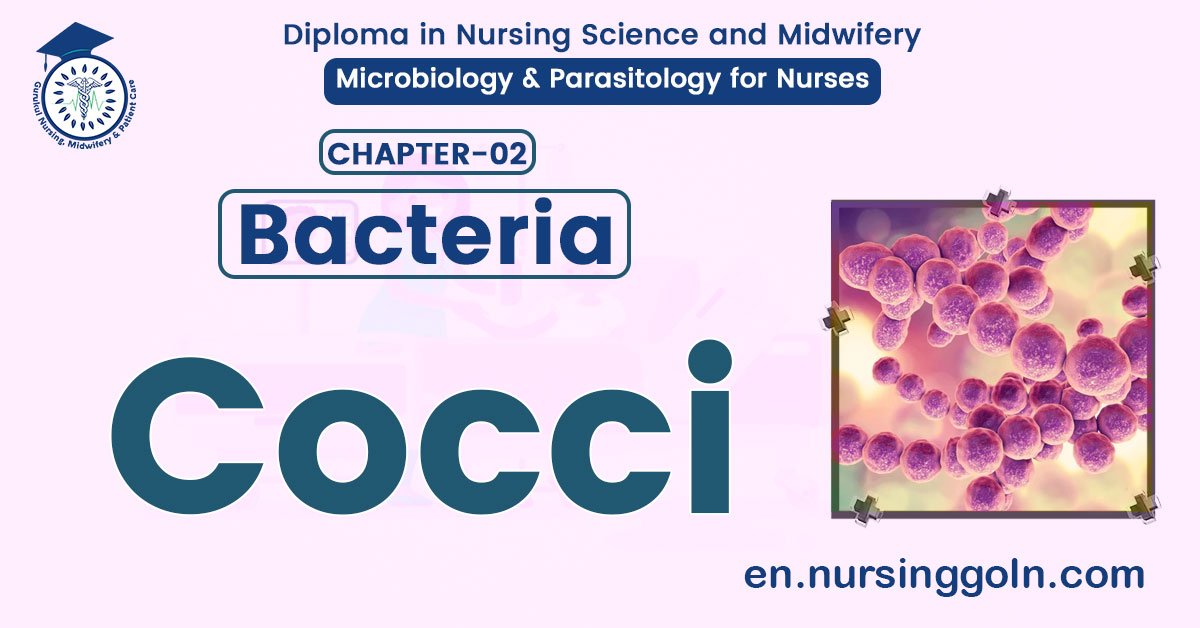Definition of Cocci – Basic microbiology, parasitology, and immunology; nature, reproduction, growth, and transmission of common microorganisms and parasites in Bangladesh; prevention including universal precaution and immunization, control, sterilization, and disinfection; and specimen collections and examination. Students will have an understanding of common organisms and parasites caused human diseases and acquire knowledge about the prevention and control of those organisms.
Definition of Cocci
A coccus (plural cocci) is any bacterium or archaeon that has a spherical, ovoid, or generally round shape. Bacteria are categorized based on their shapes into three classes: cocci (spherical- shaped), bacillus (rod-shaped) and spirochetes (spiral-shaped) cells.
Classification of Pyogenic Cocci:

Some Pathogenic Cocci:
A. Gram-positive cocci:
➤ Staphylococci:
- S. aureus
- S. epidermidis
- S. saprophyticus
➤ Streptococci:
- S. pyogenes
- S. pneuomniae
- S. agalactiae
- Enterococcus faecalis
B. Gram-negative cocci:
➤ Neisseria: N. gonorrhoeae, N. meningitides
➤ Veillonella pervula.
Diplococci
➤ Gram positive: Streptococcus pneumonia.
➤ Grain negative: Neisseria gonorrhoeae
Streptococcus Pneumoniae (Pneumococcí)
Morphological Properties of Streptococcus Pneumoniae:
- Gram-positive lancet-shaped cocci, arranged in pairs (diplococci) or short chains.
- Aerobic and facultative anaerobe.
- Capsulated organism. (Polysaccharide capsule).
- Grow in blood agar with alpha hemolysis (partial hemolysis of green-brown colour).
- Non-spore forming, non-flagellated and non-motile.
- Bile soluble.
- Optochin sensitive.
Virulence factors of S. pneumoniae:
- Polysaccharide capsule – protects from phagocytosis.
- IgA protease – Breaks secretory IgA and facilitates colonization in mucosa of
nasopharynx. - Lipotechoic acid.
- Pneumolysin – It causes alpha hemolysis.
- Autolysins.
- Protein adhesion.
- Tissue toxin.
- Leukocidin.
- Necrotoxin.
Pathogenesis of pneumonia caused by S. pneumoniae:
- The most important virulence factor is the capsular polysaccharide, and anticapsular antibody
- is protective. Lipoteichoic acid, which activates complement and induces inflammatory cytokine production, contributes to the inflammatory response and to the septic shock syndrome that occurs in some immunocompromised patients.
- Pneumolysin, the hemolysin that causes a-hemolysis, may also contribute to pathogenesis.
- Pneumococci produce IgA protease that enhances the organism’s ability to colonize the mucosa of the upper respiratory tract.
- Pneumococci multiply in tissues and cause inflammation. When they reach alveoli, there is outpouring of fluid and red and white blood cells, resulting in consolidation of the lung. During recovery, pneumococci are phagocytized, mononuclear cells ingest debris, and the consolidation resolves.
Laboratory diagnosis of S. pneumoniae
Principle:
Diagnosis is based on demonstration of causative agent by microscopic examination and isolation & identification by standard bacteriological techniques (from culture). Biochemical and serological tests are also helpful.
Steps:
➤ Specimen: Depends according to site of infection, such as-
- Sputum
- Blood
- CSF
➤ Microscopic Examination: by Gram staining.
- Findings: Gram-positive diplococci, lancet-shaped.
➤ Isolation and identification from culture:
- Culture is done in blood agar media.
- Findings: Alpha hemolytic colony on blood agar.
- Culture also can be done in Mac Conkey’s agar media.
Biochemical tests:
- Optochin sensitivity test > sensitive
- Bile solubility test ->> positive
- Inulin fermentation ->> test positive
Scrological test:
- Capsular swelling test (Quellung reaction).

Differences between Viridans Streptococci & Streptococcus Pneumoniae:
| Traits | Viridans streptococci | S. pneumoniae |
| Microscopy arrangement | Arranged in chains | Arranged in pairs or short chain |
| Morphology | Ovoid | Lancet shaped |
| Capsule (Quelung reaction) | Non-capsulated | Capsulated |
| Colonic morphology (culture media) | Convex | The colonies are umbonate (circular with projecting center |
| Inulin fermentation | Non-fermenter | Fermenter |
| Bile solubility | Bile insoluble | Bile soluble |
| Optochin sensitivity | Resistant | Sensitive |
| Bacitracin sensitivity | Sensitive | Resistant |
| Pathogenicity in mice | Not virulent | Virulent |
| Disease process | Endocarditis, dental caries | Respiratory tract infection. |
Read More….
